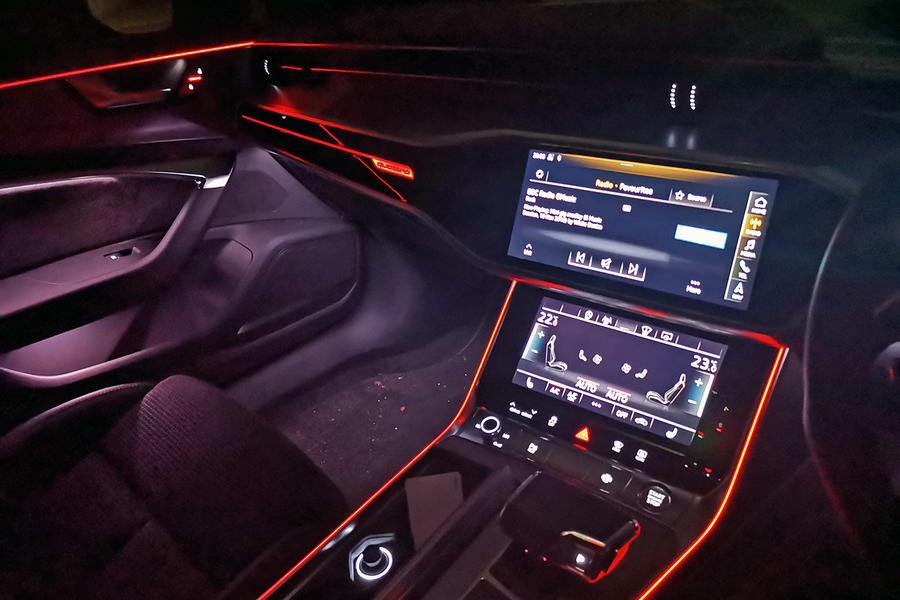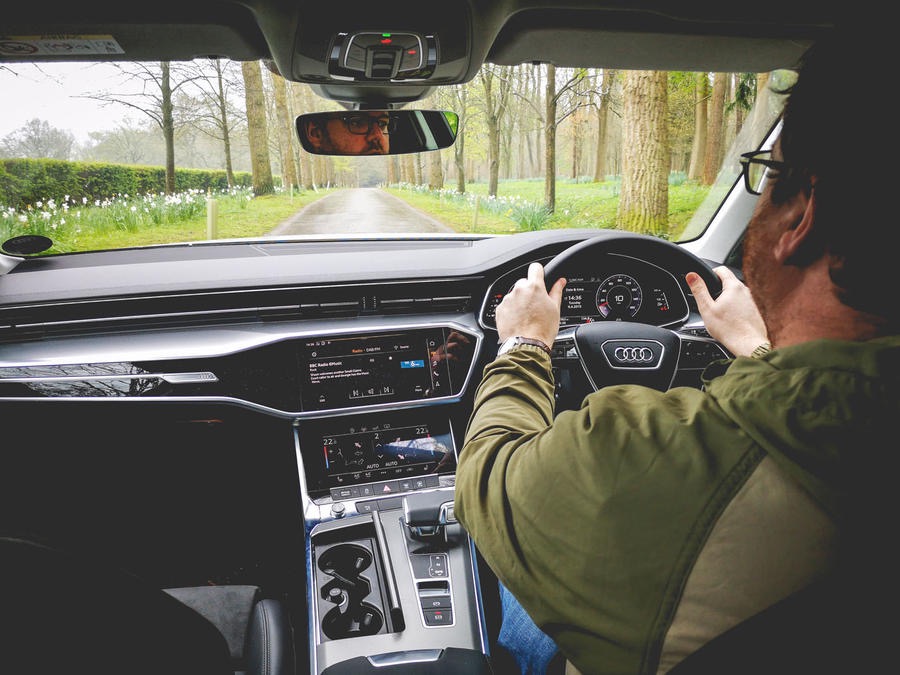Note: This topic is now closed and is included for interest only.
What to research? Something that interests me. So much interests me. Where do I begin?
Opportunity
“The Velar’s stylish cabin comes packed with more glossy screens than an Apple store, but they can be a little confusing to use when you’re driving…
it means you’ll have to spend quite some time staring down at the centre console when you should be concentrating on driving.” Watson, M. (2018).
They expressed individual preferences and technology shock. The duration of glances away from the road, usability, and cognitive load are all safety concerns.
“While it’s great in theory to have physical controls for various settings that are contingent on what’s on the display, on a few occasions, I went to adjust the temperature of the passenger cab only to realize too late that I was changing the drive mode from Comfort to Snow and Ice.” Baldwin, R. (2018).
“Unfortunately, you still have to take your eyes off the road for some time to use the screen’s when you’re driving…” Carwow, (2019a).
“…but still unintuitive to use without taking your eyes from the road.” Carbuyer, (2019).
“Well, Audi’s old MMI and BMW’s iDrive are easier to use while driving because both have a handy rotary dial rather than relying solely on touch.” Carwow, (2019b).

Initial reading around the topic identified similar concerns across a range of reviews featuring vehicular infotainment and control systems and a large proportion of research papers concerning driver distraction from mobile phone use, conversations, and navigation complexities: a wealth of material across a broad spectrum. An interesting topic. My topic.
What is Driver Distraction?
“Distraction is anything that diverts the driver’s attention from the primary tasks of navigating the vehicle and responding to critical events. To put it another way, a distraction is anything that takes your eyes off the road (visual distraction), your mind off the road (cognitive distraction), or your hands off the wheel (manual distraction). So when you think about tasks that can be a driving distraction, you can see that they often fit into more than one category: eating is visual and manual, whereas using a navigation system is all three. ” NHTSA, (2010).
Among other media outputs, USA Today’s Bomey (2017) reacted to the AAA Foundation for Trafic Safety study that listed the most distracting infotainment systems. Although citing distraction as a RTI cause, the report itself does not specify statistics of what a driver was “distracted”.
“The study, conducted by researchers at the University of Utah, tested 30 vehicle infotainment systems and found that all of them are distracting to some degree.”
Lefties and Righties
There are a number of considerations missing from the papers read to date that may reasonably exacerbate the safety of automotive consoles including left or right hand drive.
Many World automotive markets consume Left Hand Drive (LHD) vehicle with which to drive on the Right. I have always believed that placing the driver in the middle of the road may be a residue from jousting, although in practicality it places the driver at the place of most risk of collision with oncoming traffic, which aims to make them behave.
So the majority of vehicle development caters for Right Handed drivers. Of course, 10 percent of Earth’s drivers may be Left Handed (WoldAtlas, 2018) and for the remaining 90 percent a console positioned on their right is likley easier to operate than one on their left. Drivers in the UK and Ireland drive on the Left in Right Hand Drive (RHD) vehicles. The center consol controls need operated by the Left hand.
It is known that forcing a Leftie to work as a Rightie can cause dramatic cognitive and motor effort. Again and as NHTSA states above, cognitive and motor efforts are distractions when driving. Not least, forcing Lefties into Righties, or Righties into Lefties is known to cause more than a little trauma (Anything Left Handed, n.d.). It’s a brain thing.



Individual Risk Management
During initial reading of papers on driver distraction, I am amazed at the paucity of work regarding driver’s personality or their acceptance or aversion to risk when measuring the time taken to control features with their eyes off the road. Research does conclude it is not the time taken glancing away from the road. It is the number of glances taken. An average glance time is between 1 and 2 seconds in many cases. And what of the over confident risk taker?



Should we be concerned that overtly aggressive personalities may accept longer duration of distraction? Their stereotypical personality traits would suggest so. And how may we design interactions that account for that. Is it important?
4 percent of the UK and Ireland populations are reported to demonstrate psychopathic traits: and far more in the USA. If we aim to consider 10 percent of Lefties and Righties in our automotive UI design, then perhaps we should consider risk-taking personalities measured in the research?
Mitigations
Vehicle marques are clearly seeking to minimise safety concerns including offering naturalistic voice recognition and gesture control. Interestingly, research suggests conversation processing and particularly arguing causes significant distraction from driving tasks. As defined by the NHTSA above, taking hands off the steering wheel is a manual distraction. Gestures may not be an ideal solution?
Motivation
As a former Emergency Medical Technician I recall attendance at many road traffic incidents (RTIs). Incidents and not accidents? Yes. No “accident” occurs without a cause.
Often the tragically innocent victims were involved by a result of an other’s cause. Distraction and speed were common threads in our casualties’ recounts of their experience. Perhaps increasing driver distractions will result in more RTIs? And while drivers perceive themselves less vulnerable amid the myriad of safety, technological, and isolating features they may purchase with their vehicles, their increased speed, cognitive dissonance and distraction can only create more innocent victims?
“Jake Nelson, director of traffic safety advocacy and research at AAA, said automakers should improve their systems by preventing people from accessing certain features while the vehicle is in motion. These are solvable problems.” (Bomey, 2017).
While trends, innovation, and fashion form a significant demand on vehicular user experience design the current batch of infotainment and screen-based control systems appear to ignore research on distraction. Market forces trumping highway safety? Manufacturers are clearly looking for solutions without working to standards.
Perhaps we can identify a fraction of an improvement?
Direction
I don’t want to enter the project with preconceived solutions, however after giving thought to blind device users in Module 3, I can’t help but believe something of how we can make an accessible interface work for them can transmit across to the driving environment? It may be a fantasy? We’ll see if there’s an opportunity.
References
Anything Left Handed. (n.d.). The effects of making a left-hander write right-handed. Retrieved July 20, 2019, from https://www.anythinglefthanded.co.uk/being-lh/children/changing-left-to-right.html.
Baldwin, R. (2018). The Velar is a Land Rover for (rich) tech-lovers. Retrieved July 7, 2019, from https://www.engadget.com/2018/01/04/2018-range-rover-velar-review/.
Bomey, N. (2017, October 5). Which cars are most distracting? AAA study reveals offenders. Retrieved July 20, 2019, from https://eu.usatoday.com/story/money/cars/2017/10/05/aaa-distracted-driving-infotainment-study/734677001/.
Carbuyer. (2019, July 9). Audi A6 Avant Estate. Retrieved July 10, 2019, from https://www.carbuyer.co.uk/reviews/audi/a6/estate/interior.
Carwow. (2019a). Audi A6 Avant interior. Retrieved July 7, 2019, from https://www.carwow.co.uk/audi/a6-avant/interior#nav.
Carwow. (2019b). Audi A4. Retrieved July 20, 2019, from https://www.carwow.co.uk/audi/a4-avant/interior#nav.
NHTSA. (2010, April). Distraction. Retrieved July 20, 2019, from https://one.nhtsa.gov/Research/Human-Factors/Distraction.
Taylor. (2016, November 17). Martin Scorsese’s most iconic protagonists, from gangsters to psychopaths. Retrieved July 26, 2019, from http://hero-magazine.com/article/78109/martin-scorseses-most-iconic-protagonists/.
Smith, D. (2019, June 6). Audi A6 Avant 2019 long-term review. Retrieved July 20, 2019, from https://www.autocar.co.uk/car-review/audi/a6/first-drives/audi-a6-avant-2019-long-term-review.
Watson, M. (2018). Land Rover Range Rover Velar interior. Retrieved July 7, 2019, from https://www.carwow.co.uk/land-rover/range-rover-velar/interior#nav.
WorldAtlas. (2018, May 16). What Percentage Of The World Population Are Left Handed? Retrieved July 26, 2019, from https://www.worldatlas.com/articles/what-percentage-of-the-world-population-are-left-handed.html.
